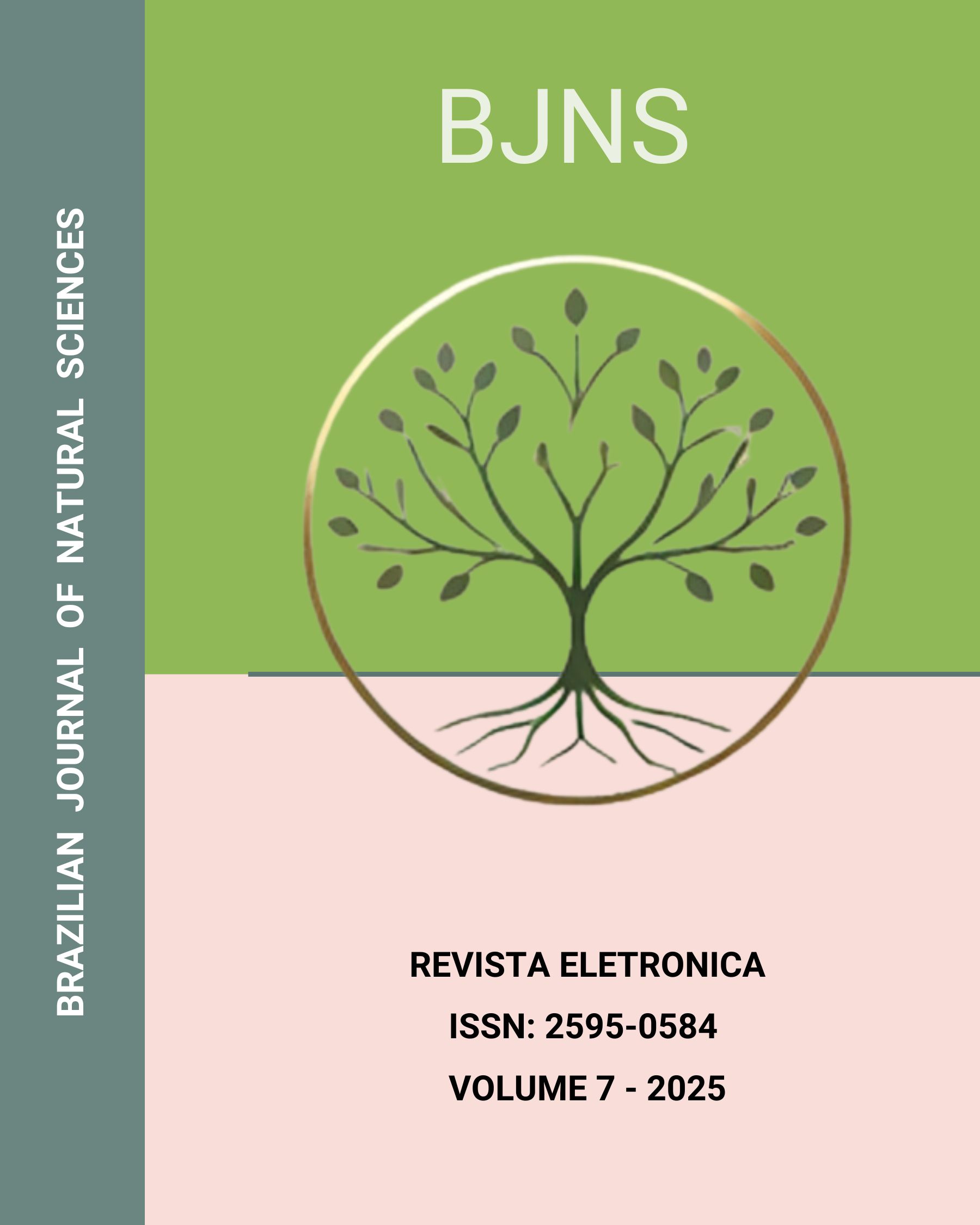Development of a prolonged-release system for the association of nonsteroidal anti-inflammatory drugs (NSAIDs)
Main Article Content
Abstract
Pain is a response to cellular injury caused by accidental or intentional tissue damage. Nonsteroidal anti-inflammatory drugs (NSAIDs) are the most prescribed medications worldwide for pain management, including postoperative pain. However, due to the high frequency of doses required during therapy, gastric injuries can develop. Tromethamine ketorolac and sodium diclofenac are two widely used NSAIDs for pain relief as anti-inflammatory and antipyretic agents (especially sodium diclofenac), but there are no formulations combining both drugs that provide sustained release. This drug release model is extremely useful in reducing the number of doses, increasing the dosing interval, and ensuring long-term effects. Microencapsulated systems are extensively used to better protect the drug from climatic conditions, gastric fluids, and to ensure greater stability, as well as being a great tool for modulating drug release according to the desired action and intended pharmacotherapy. Thus, in this study, using the most modern rational approach for the design of new drugs and evaluation of critical quality attributes, multivariate studies, in silico and in vitro prediction, a controlled release system for the combination of tromethamine ketorolac and sodium diclofenac was developed through microencapsulation in a lipid blend with beeswax and ethyl oleate using a cooling-induced emulsification method for the dispersed phase. Different concentrations of beeswax, ethyl oleate, and drugs were tested, and in experiments with lower percentages of ethyl oleate (wax-to-drug ratio of 6:1), it was possible to obtain matrix lipid solid system, with higher efficiency in modulating the release of both drugs for up to 12 hours. The drug content was quantified, ranging from 4 to 13 mg/mg for KT and 12 to 39 mg/mg for DS, and the release profile was analyzed using phosphate buffer pH 6.8 in USP apparatus 2. The formulations demonstrated a controlled release profile compared to free drug, indicating that drug release occurred through modulation of the lipid matrix system.
Article Details

This work is licensed under a Creative Commons Attribution-NonCommercial-NoDerivatives 4.0 International License.
Copyright Statement - Policy Proposal for Open Access Journals
Authors who publish in the Brazilian Journal of Natural Sciences (BJNS) agree to the following terms: 1 - Authors retain the copyright and grant the journal the right to first publication, with the work simultaneously licensed under the Creative Commons Attribution License allowing sharing of the work with recognition of the authorship of the work and initial publication in this journal. 2 - Authors are authorized to assume additional contracts separately, for non-exclusive distribution of the version of the work published in this journal (eg, publishing in institutional repository or as a book chapter), with acknowledgment of authorship and initial publication in this journal. 3 - Authors are allowed and encouraged to publish and distribute their work online (eg in institutional repositories or on their personal page) at any point before or during the editorial process, as this can generate productive changes, as well as increase the impact and citation of published work. This is an open access article under the CC-BY license
References
da Silva Nascimento, S., Hirsh, G. E., Pretto, C. R., de Fátima Colet, C. & Stumm, E. M. F. Tratamento Farmacológico e Não Farmacológico no Manejo da Dor de Pacientes em Pós-Operatório Imediato (POI). Rev. Contexto Saúde 20, 102–117 (2020).
Foss, N. B. & Kehlet, H. Challenges in optimising recovery after emergency laparotomy. Anaesthesia 75, e83–e89 (2020).
Katzung, B. G. Basic and clinical pharmacology. (Mc Graw Hill, 2017).
Klaumann, P. R., Wouk, A. & Sillas, T. Patofisiologia da dor. Arch. Vet. Sci. 13, (2008).
WHO, W. H. O. Palliative care. http://www. who.int/cancer/palliative/painladder/en/ (2020).
Dwarica, D. S., Pickett, S. D., Zhao, Y. D., Nihira, M. A. & Quiroz, L. H. Comparing ketorolac with ibuprofen for postoperative pain: a randomized clinical trial. Female Pelvic Med. Reconstr. Surg. 26, 233–238 (2020).
Hall, J. E. Guyton & Hall. Tratado de fisiología médica. (Elsevier Health Sciences, 2021).
Bindu, S., Mazumder, S. & Bandyopadhyay, U. Non-steroidal anti- inflammatory drugs (NSAIDs) and organ damage: A current perspective. Biochem. Pharmacol. 114147 (2020).
Sinha, V. R., Kumar, R. V. & Singh, G. Ketorolac tromethamine formulations: an overview. Expert Opin. Drug Deliv. 6, 961–975 (2009).
Tsujimoto, S. et al. The prevalence of endoscopic gastric mucosal damage in patients with rheumatoid arthritis. PloS One 13, e0200023 (2018).
Allen, L. & Ansel, H. C. Ansel’s pharmaceutical dosage forms and drug delivery systems. (Lippincott Williams & Wilkins, 2013).
Bidone, J. Desenvolvimento de microesferas a partir do poli-(3- hidroxibutirato) e diferentes adjuvantes de formulação visando o prolongamento da liberação do ibuprofeno para o tratamento localizado da artrite. (2008).
Carmignan, F. Desenvolvimento de microesferas de ibuprofeno a partir dos biopolímeros polihidroxialcanoatos: estudo da influência das características físico-quimicas das microesferas sobre o perfil de liberação do fármaco e degradação das partículas. (2006).
Medeiros, D. C. de. Desenvolvimento de microesferas de diclofenaco de sódio de liberação prolongada: avaliação do potencial de utilização de blendas de acetobutirato de celulose e polaxamers na modulação do perfil de liberação do fármaco. (2009).
Osman, R. E., Fetih, G. & Habib, F. KETOROLAC TROMETHAMINE LOADED NANOPARTICLES FOR OCULAR DELIVERY: FORMULATION, IN- VITRO AND EX-VIVO EVALUATION. Bull. Pharm. Sci. Assiut 43, 79–94 (2020).
Silva, F. G. A. PRESCRIÇÃO E O USO RACIONAL DE AINES NO CONTROLE DA DOR EM ODONTOLOGIA. (2020).
ANVISA. Agência Nacional de Vigilância Sanitária. Agência Nacional de Vigilância Sanitária - Anvisa https://www.gov.br/anvisa/pt-br/pagina-inicial (2020).
FDA, F. D. A. Orange Book: Approved Drug Products with Therapeutic Equivalence Evaluations.https://www.accessdata.fda.gov/scripts/cder/ob/index.cfm (2020).
AppaRao, B. et al. Design and evaluation of sustained release microcapsules containing diclofenac sodium. Int J Pharm Biomed Res 1, 90–93 (2010).
Todd, P. A. & Sorkin, E. M. Diclofenac sodium. Drugs 35, 244–285 (1988).
Aulton, M. E. & Taylor, K. M. Aulton’s Pharmaceutics: The Design and Manufacture of Medicines. (Elsevier Health Sciences, 2017).


